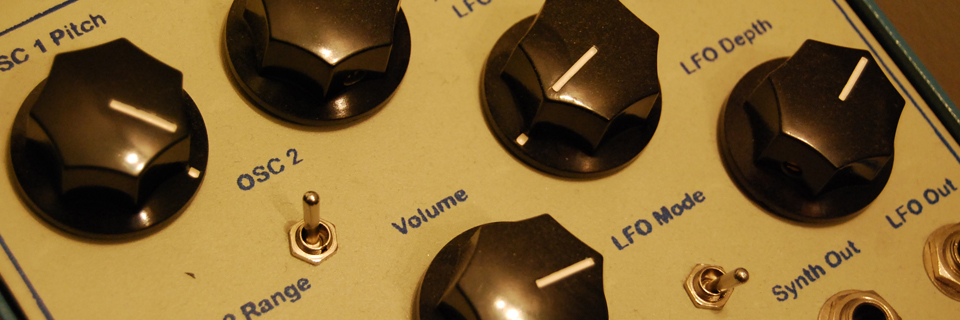1. Pitch / frequency
2. Timbre / waveshape
3. Amplitude
Sound has no other properties, it doesn't have colour or taste or smell etc.
Most devices for manipulating sound fall into one of 4 categories ...
- Synthesisers, which create electrical (or digital) soundwaves
- Samplers, which playback and process pre-recorded digital sounds
- Effects processors, which add additional harmonics into a soundwave
- Dynamic processors, which control a soundwaves amplitude over time
Synthesis
Learning analogue (subtractive) synthesis is often thought to be the best way to understand sound manipulation. All the controls for creating and editing patches (sounds) on a synthesiser manipulate one or more of the folowing 3 sound properties, often changing them dynamically over time.
1. Altering pitch / frequency
Here are some ways in which the pitch of a soundwave may be manipulated ...
- A singer controlling pitch with the muscles in their larynx
- A pianist playing different notes on a keyboard
- A guitarist moving their fingers up and down a fretboard or bending a string
- A brass player operating the valves on their instrument
- Pitch wheel on an electronic keyboard
- A harmoniser processing a soundwave
- An LFO sending a controlled voltage to modulate the pitch of an oscillator
- A programmer setting the frequency of an oscillator
- Time stretching in a digital wave editor
2. Altering timbre / waveshape
Every sound has a unique waveshape. This waveshape is derived from the combined energies of many individual harmonics, and determines the perceived character (timbre) of the sound. Here are some ways in which timbre may be altered ...
- By passing a soundwave through a filter
- By combining 2 or more soundwaves together to create a phase relationship between them
- By applying EQ to the soundwaves
- By editing the frequencies and amplitudes of the individual signals ("harmonics") which combine together to build an electrical (or digital) pressure soundwave in an oscillator (see FM or additive synthesis)
- By processing a soundwave with an aural exciter
3. Altering amplitude
Here are some ways in which the amplitude of the individual harmonics within a complex soundwave, or the overall amplitude of a complex soundwave, may be manipulated ...
- By turning an amplifier up and down by hand
- By controlling an amplifier with an envelope
- By controlling an amplifier with an LFO
- By combining 2 or more waves together to create a phase relationship between them
- By processing sound with a compressor
- By processing sound with a noise gate
- By altering velocity when playing an acoustic instrument

